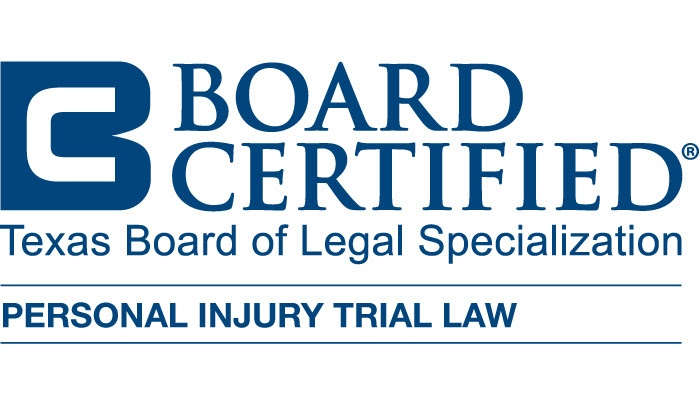In Texas, dog bite lawsuits can be complex and multifaceted, involving various legal defenses that dog owners might employ to mitigate liability. Understanding these defenses is crucial for both plaintiffs and defendants as they navigate the legal landscape following a dog bite incident. Texas follows a unique blend of negligence and strict liability principles, making it imperative to grasp the potential defenses a dog owner might raise to avoid or reduce liability. This exploration will delve into the common defenses employed by dog owners in Texas dog bite lawsuits, providing a comprehensive understanding of the legal strategies that might be utilized.


Understanding Texas Dog Bite Laws
Texas does not have a specific statute that directly addresses dog bites. Instead, dog bite cases are generally governed by the principles of common law negligence. Under Texas law, a dog owner can be held liable if it is proven that they knew or should have known that their dog had dangerous propensities abnormal to its class. This legal framework is often referred to as the “one bite rule,” suggesting that a dog owner may not be liable for the first bite unless they had prior knowledge of the dog’s aggressive tendencies. Additionally, plaintiffs can pursue claims based on premises liability or strict liability in certain circumstances, adding layers of complexity to these cases.
Lack of Knowledge of Dangerous Propensities
One of the primary defenses a dog owner might assert is the lack of knowledge of their dog’s dangerous propensities. In Texas, to hold a dog owner liable under the common law negligence standard, the plaintiff must demonstrate that the owner knew or should have known about the dog’s aggressive behavior. If the dog has never exhibited aggressive tendencies before, the owner can argue that they had no reason to anticipate the bite. This defense hinges on the idea that without prior knowledge of the potential danger, the owner could not have taken steps to prevent the incident. This defense is particularly potent in cases involving first-time bites where the dog had no history of aggression.
My focus is to give a voice to families who have suffered a wrongful death or a serious injury to a family member caused by an 18-Wheeler, commercial truck, or a drunk driver. Contact us today, we can help you.Helping Injury Victims for Over 25 Years
Provocation by the Victim
Another common defense in dog bite lawsuits is that the victim provoked the dog, leading to the bite. Provocation can take various forms, including teasing, hitting, or otherwise agitating the animal. If the dog owner can prove that the victim’s actions directly led to the dog biting, this can significantly reduce or even eliminate liability. The argument is based on the principle that the dog’s behavior was a direct response to the victim’s actions, and therefore, the owner should not be held responsible. This defense requires substantial evidence, such as witness testimonies or video footage, to corroborate the claim of provocation.
Trespassing on Private Property
Trespassing is another viable defense for dog owners in Texas dog bite cases. If the victim was unlawfully on the owner’s property at the time of the bite, the owner might argue that they are not liable for injuries sustained. Texas law provides certain protections to property owners against claims brought by trespassers. The rationale is that the property owner did not invite or expect the trespasser, and thus, they should not be held accountable for injuries resulting from the trespasser’s illegal presence. However, this defense is nuanced and depends on the specific circumstances, including whether the owner had set up adequate warning signs and whether the trespasser was a child, as different rules may apply.
Assumption of Risk
The assumption of risk defense is predicated on the idea that the victim knowingly exposed themselves to the risk of a dog bite. This defense can be effective in situations where the victim was aware of the dog’s aggressive tendencies and still chose to interact with the animal. For instance, if a person enters a yard with clear signs warning of a dangerous dog and subsequently gets bitten, the dog owner might argue that the victim assumed the risk by ignoring the warnings. To succeed with this defense, the owner must demonstrate that the victim had actual knowledge of the risk and voluntarily accepted it.
Comparative Negligence
Texas follows a modified comparative negligence rule, which can significantly impact dog bite cases. Under this rule, if the victim is found to be partially at fault for the incident, their compensation can be reduced by their percentage of fault. If the victim is found to be more than 50% responsible, they may be barred from recovering any damages. Dog owners can utilize this defense to argue that the victim’s actions contributed to the bite, such as ignoring warnings, failing to heed instructions, or engaging in risky behavior around the dog. By shifting some of the blame to the victim, the dog owner can potentially reduce their liability.
Statute of Limitations
In Texas, the statute of limitations for filing a dog bite lawsuit is generally two years from the date of the incident. Dog owners can employ this defense to argue that the victim’s claim is time-barred if they fail to file within this period. The statute of limitations serves to ensure that lawsuits are brought within a reasonable time frame, allowing for the preservation of evidence and the reliability of witness testimonies. If a victim waits too long to file a lawsuit, the dog owner can request that the court dismiss the case on the grounds that the statute of limitations has expired.
Related Videos
Choosing a Personal Injury Attorney
Types of Compensation in a Truck Accident Claim
Contributory Negligence
In addition to comparative negligence, contributory negligence can also serve as a defense in dog bite cases. This defense involves demonstrating that the victim’s own negligence played a significant role in causing the incident. For example, if a person ignores visible warning signs or instructions from the dog owner and gets bitten, the owner might argue that the victim’s negligence contributed to the bite. While contributory negligence does not completely bar recovery like it does in some states, it can reduce the amount of compensation the victim receives based on their degree of fault.
Defense of Others or Property
Dog owners might also defend against a lawsuit by claiming that their dog was protecting them, another person, or their property at the time of the bite. This defense hinges on the idea that the dog’s actions were justified because they were acting in defense. For instance, if a person is perceived as a threat to the owner or is attempting to break into the owner’s home, the dog’s protective response might be considered reasonable. The success of this defense depends on demonstrating that the dog’s actions were a proportionate response to the perceived threat.
Compliance with Leash Laws
Dog owners might argue that they complied with local leash laws and other regulations, suggesting that they took reasonable steps to prevent the incident. If the owner can prove that the dog was properly restrained and the bite still occurred, this compliance can be used as a defense. This argument is based on the notion that the owner fulfilled their legal obligations to control their dog, and thus, should not be held liable for the bite. The effectiveness of this defense can vary depending on the specifics of the case and the local ordinances in place.
Absence of Injury
In some cases, dog owners may argue that the victim did not sustain significant injuries from the bite. If the injuries are minor or nonexistent, the owner might claim that the victim’s damages are negligible. This defense focuses on minimizing the compensation that the victim can claim, emphasizing the lack of serious harm. Medical records and testimonies can play a crucial role in determining the extent of the injuries and the validity of this defense.
Contact Willumsen Law Firm Today
If you are dealing with a dog bite case, whether as a victim seeking compensation or a dog owner facing a lawsuit, it is crucial to have experienced legal representation to guide you through the process.
At Willumsen Law Firm, P.C., we have extensive experience in handling dog bite cases in Texas. Our dedicated team is committed to advocating for your rights and ensuring that you receive the justice and compensation you deserve. If you have been injured in a dog bite incident or are facing a lawsuit, do not navigate this challenging journey alone. Contact us today for a consultation and let us help you achieve the best possible outcome in your case. Your path to justice begins with a single step — reach out to Willumsen Law Firm, P.C., and let us fight for you.



